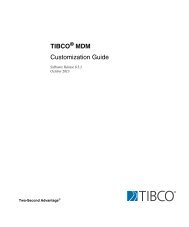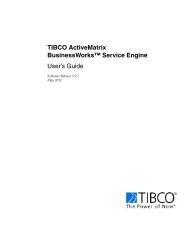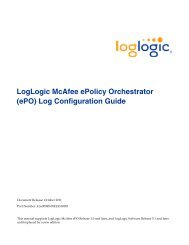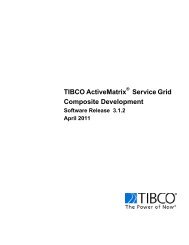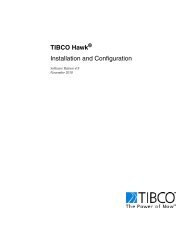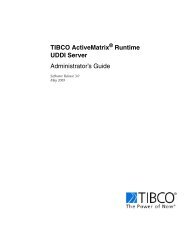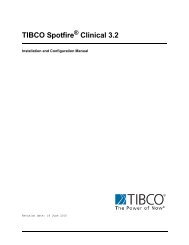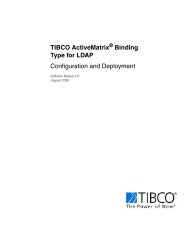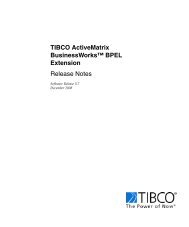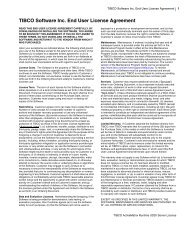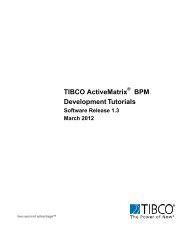TIBCO Spotfire Server 3.2.2 - TIBCO Product Documentation
TIBCO Spotfire Server 3.2.2 - TIBCO Product Documentation
TIBCO Spotfire Server 3.2.2 - TIBCO Product Documentation
Create successful ePaper yourself
Turn your PDF publications into a flip-book with our unique Google optimized e-Paper software.
Advanced Procedures<br />
1 Open Tools > Internet Options in Internet Explorer.<br />
2 Select the Security tab.<br />
3 Select Local Intranet.<br />
4 Click Sites > Advanced.<br />
5 Add https:// to the list of hosts in this zone.<br />
6 Click OK.<br />
7 Select Custom level for the Intranet zone security settings.<br />
8 Make sure that Don't prompt for client certificate selection when no certificates or<br />
only one certificate exists is Enabled.<br />
9 Click OK and confirm that the security settings should be changed.<br />
Comment: This works if there is only one matching certificate. Thus if there is more<br />
than one certificate which can be used by the server, there will still be<br />
selection dialogs.<br />
9.8 Setting up HTTPS in a Load Balanced<br />
Environment<br />
In a clustered environment, the clients see the load balancer as the server. Therefore, in<br />
order to secure the communication in the <strong>Spotfire</strong> system, using HTTPS, the load<br />
balancer needs to be configured to do this. This is achieved by obtaining (or creating)<br />
a server certificate for the load balancer and instalingl it on the load balancer. You may<br />
need to convert it first.<br />
Note: You cannot use a server certificate created for a <strong>Spotfire</strong> server. A server<br />
certificate must always be created for the computer it is intended for.<br />
The following instructions assume that you are acquainted with the Apache httpd and<br />
its configuration files. It should be seen as an overview of how HTTPS is setup for use<br />
in load balancing a <strong>Spotfire</strong> system, not as a tutorial on Apache httpd. For more<br />
information, please refer to the Apache httpd manual.<br />
1 Install Apache httpd with ssl support and the mod_ssl.so and mod_jk modules.<br />
2 Create a self-signed server certificate.<br />
3 If needed, convert the certificate to a format readable by the load balancer.<br />
4 Store the converted certificate in the Apache conf directory.<br />
5 Configure Apache to use the certificate files.<br />
6 Make your clients trust the CA certificate.<br />
<strong>TIBCO</strong> <strong>Spotfire</strong>® <strong>Server</strong> <strong>3.2.2</strong> 97 (144)



